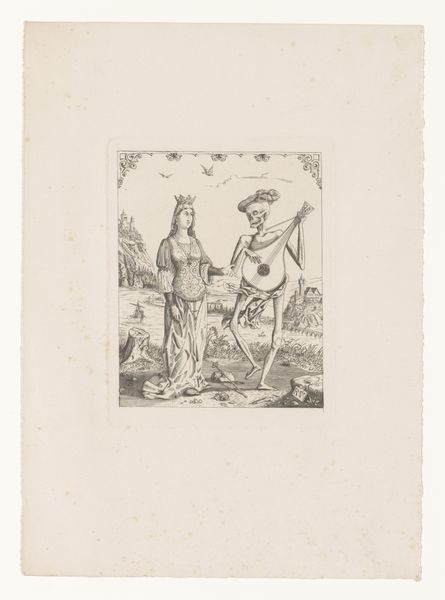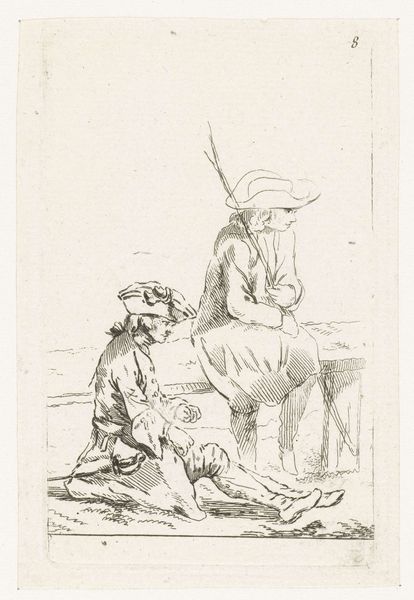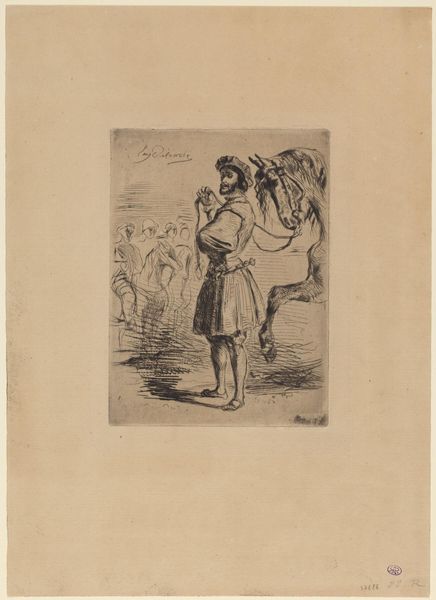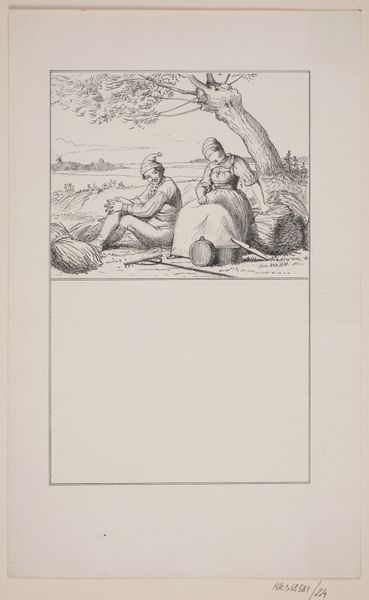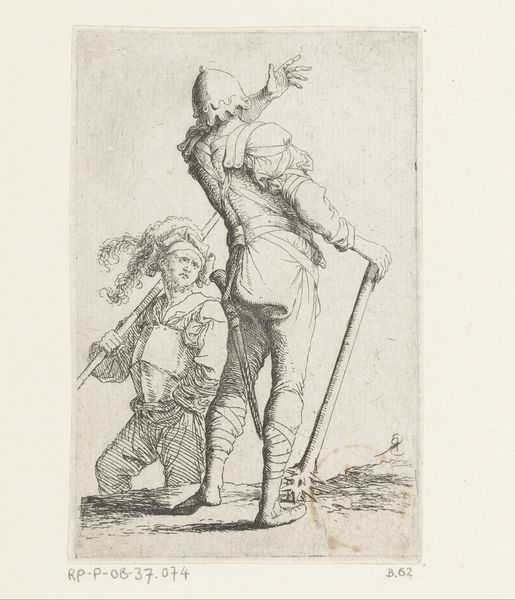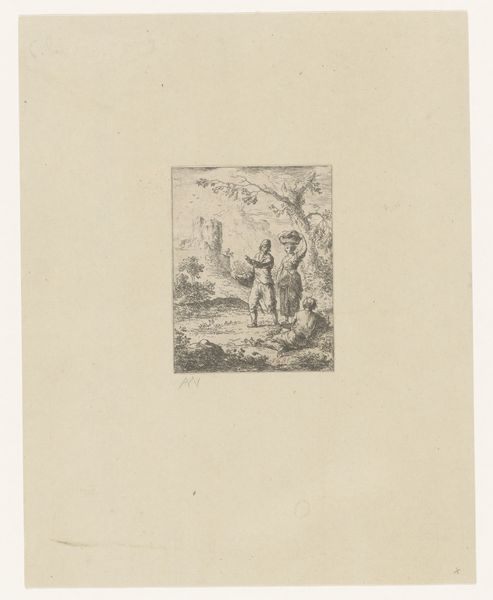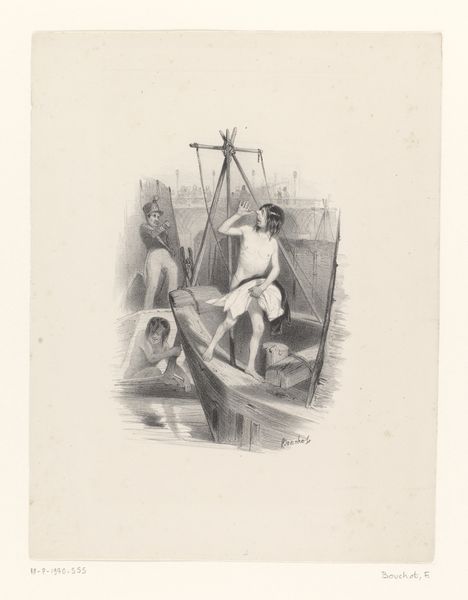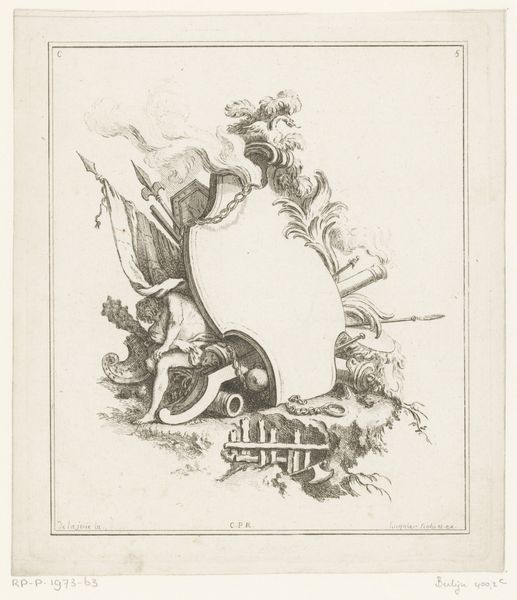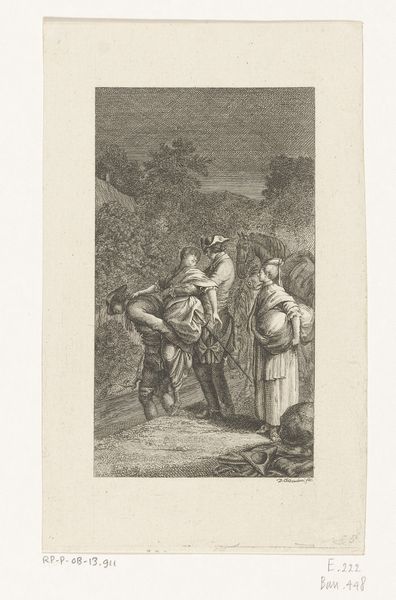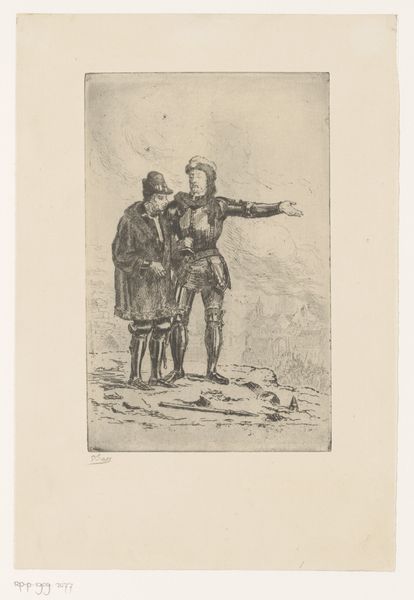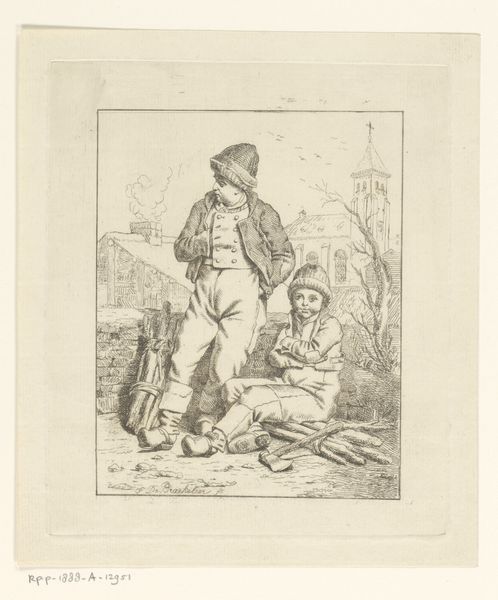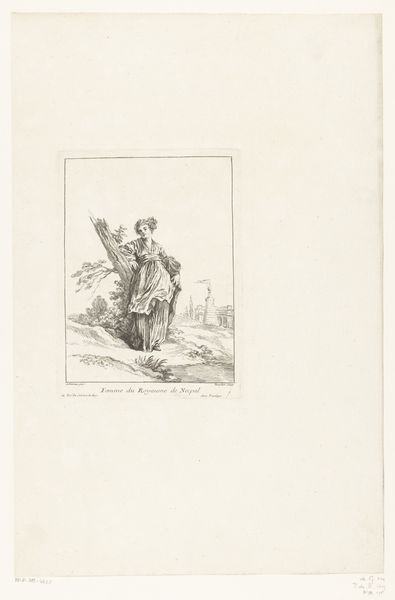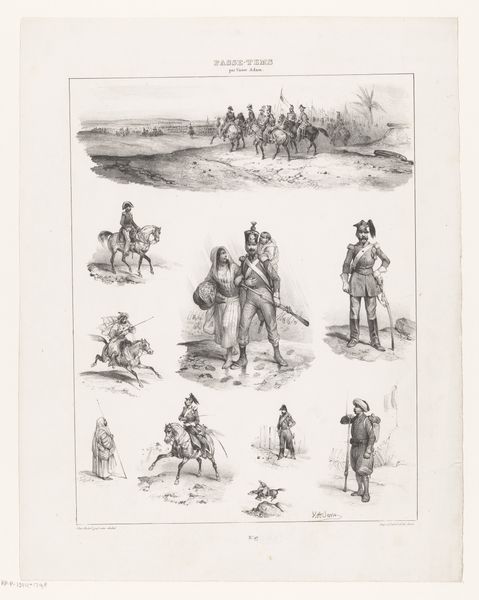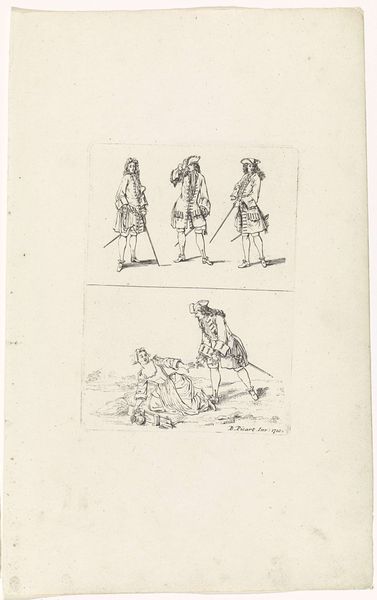
drawing, pencil
#
drawing
#
greek-and-roman-art
#
landscape
#
figuration
#
pencil
#
history-painting
Dimensions: height 520 mm, width 360 mm
Copyright: Rijks Museum: Open Domain
Curator: Wilhelmus Petrus van Geldorp created this pencil drawing titled 'Aeneas defeats Turnus' in 1871. My first impression is the stark simplicity—a sense of captured movement, as though we’re observing a stage set between acts. Editor: It's quite graphic, isn't it? Even with the preliminary pencil medium, the narrative is vivid, almost visceral. It reminds me how much warfare depended on access to specific ore for smelting bronze to make weapons, and human labor. Curator: Precisely. Look at Turnus, on his knees, hands raised in surrender or supplication. The drawing embodies the social power dynamics embedded in the epic tradition—the consequences of defeat were rarely abstract. The Roman patriarchy at its finest. Editor: Geldorp’s choice to render this with such visible pencil strokes speaks volumes. The sketch-like quality foregrounds labor – each mark is a record of the artist's hand, as are the soldier's handcrafted shields in the background. It isn't a seamless, illusionistic painting; instead, we feel the material process of its making. Curator: Agreed. But isn't there a sense of inherent vulnerability exposed here, within its seemingly robust historical theme? Note the performative nature of masculinity and power as each leader acts his respective part for the crowd: the vanquished humbled and the victor, poised with lethal authority. How are these figures, Aeneas and Turnus, both products *and* performers of societal roles that intersect and inevitably result in subjugation? Editor: It's hard to ignore how much the image depends on raw materials: the pigment of the pencil, the cheap drawing paper…It's about empire, class, domination, of course, but, at its core, is about the ways armies have commandeered both the people *and* the landscape since time immemorial. Curator: And within this tension of victory and defeat, Geldorp situates these warriors, highlighting how masculinity is rendered. An interplay of force, social duty and surrender exposes the complex nature of conquest that we see carried on into modern day conflicts. Editor: The beauty of understanding the medium and how its means of production can enhance and subvert subject and theme makes a world of difference here. It adds a richness. Curator: I appreciate the multiple layers—historical, mythical, and societal—all emerging to inform what we view here today, together. Editor: Yes, thinking through production as content truly allows an eye-opening perspective.
Comments
No comments
Be the first to comment and join the conversation on the ultimate creative platform.
